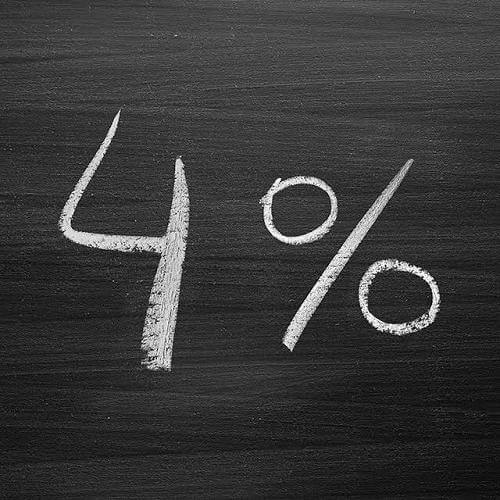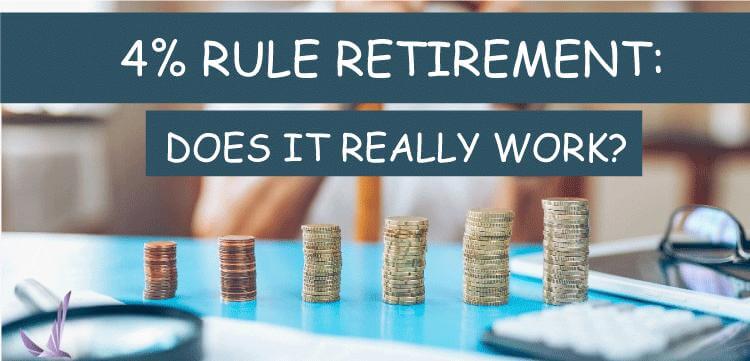What Is the 4% Rule for Withdrawals in Retirement, and How Much Can You Spend?
The accumulation phase is a very significant step during retirement planning, but the case is similar to the spending phase as well. It is concerning how things can go south if a person spends a lot in his/her initial days and has no money left for later. To tackle this problem and provide an effective solution, the 4% rule comes into the picture. To put it simply, this rule says that if you withdraw only 5% of your portfolio annually after you are retired, your money can last up to 30 years, and you won't run out. What Is the 4% Rule?
Understanding the 4% Rule
This rule provides a guideline to retirees so that they can estimate an amount that is safe to withdraw without hurting their plans. Some financial planners use this rule to guide their clients about how to go about their money. A person's life expectancy, as said earlier, is a significant factor in deciding whether the selected rate will be good or not. Retirees that have a long life span need their portfolios to be long-lasting, and it should not be neglected that medical expenses and other costs increase as a person grows older, and their portfolios should be constructed in a way to cover it all up. Background of the 4% Rule
Accounting for Inflation
Pros

Cons
Economics and the 4% RuleThe 4% Rule may perhaps be a touch too conservative. It was created to account for the worst economic scenarios, like 1929, says investment planner Michael Kitces, and has held up well for individuals who retired through the two most recent financial crises. Kitces emphasizes: The person who retired in 2000 is 'in line with the one who retired in 1929 but is doing far better than the rest of them. 2008, however, even though it had to begin with the absence of the global financial crisis, is performing better than all of these other scenarios that involve financial tension in the whole world. To rephrase it, even though the crash in technology and the global economic depression were very scary for people all over the world, they still haven't been able to outshine the 4% rule of withdrawal, and the rule has succeeded so far in handling all kinds of economic situations. But, as we all know, this factor should not be considered a reason good enough not to explore beyond this rule. Safety is the most important thing that retirees search for in their withdrawal plans, even if following the plan might make the retirees end up with a huge amount of money in bearable economic times. Kitces points out that a withdrawal rate of 4%is quite modest as it works magically for long-term returns and promises a return of almost 8% on a balanced portfolio of 60/40. At the same time, some experts slightly differ in opinion from Kitces. Some of the experts draw attention to the recent low-interest rates on savings and bonds and argue that 3% might be a more suitable withdrawal rate for a retiree. The best way forward, as suggested by the experts, is to take a good look at the current situation with a financial planner and consider factors such as how much savings you have made yet, what investments you are currently planning and what time you have chosen for retirement. Frequently asked questionsThere are some queries from some of the retirees as well as the people who are planning their retirement soon. These questions are frequently asked, and their answers should be known to everyone.
This rule was invented so that it could meet the financial needs of people who are planning to retire or have retired even when the economic situations are at their lowest, for example, a stretched market downturn. There are a lot of experts who stick to their interpretation of the withdrawal plans and believe that the 5% rule gives retirees the liberty to enjoy a comfortable lifestyle and adds not more than a little risk to the plan.

The 4% rule aims at making the saving of our retirement plan last for not less than 30 years, and if the retiree sticks to the plan, it gives them opportunities to enjoy more withdrawal one or two times.
This rule has its prime focus on preparing for retirement at the age of 65 years. If a person plans to retire early or if he/she decides to work more than just 65 years, in both cases, the financial needs would differ greatly.
Any online calculator that is specifically made for calculating retirement withdrawal can be used by retirees to calculate their money, using the 4% rule as the exact amount that one needs to withdraw yearly. The ConclusionFor a huge amount of people, managing their savings for their retirement is an act of balance. If the retiree withdraws a lot of money too fast, then it generates a risk of running out of money. At the same time, not withdrawing money doesn't make sense as he/she will be deprived of the benefits that their earned money could offer them. To the people who are planning to have a rule they could follow to ease the time after their retirement, the 4% rule is the kind of choice one would not regret making.
Next TopicGuide to Checking Accounts
|
 For Videos Join Our Youtube Channel: Join Now
For Videos Join Our Youtube Channel: Join Now
Feedback
- Send your Feedback to [email protected]
Help Others, Please Share










